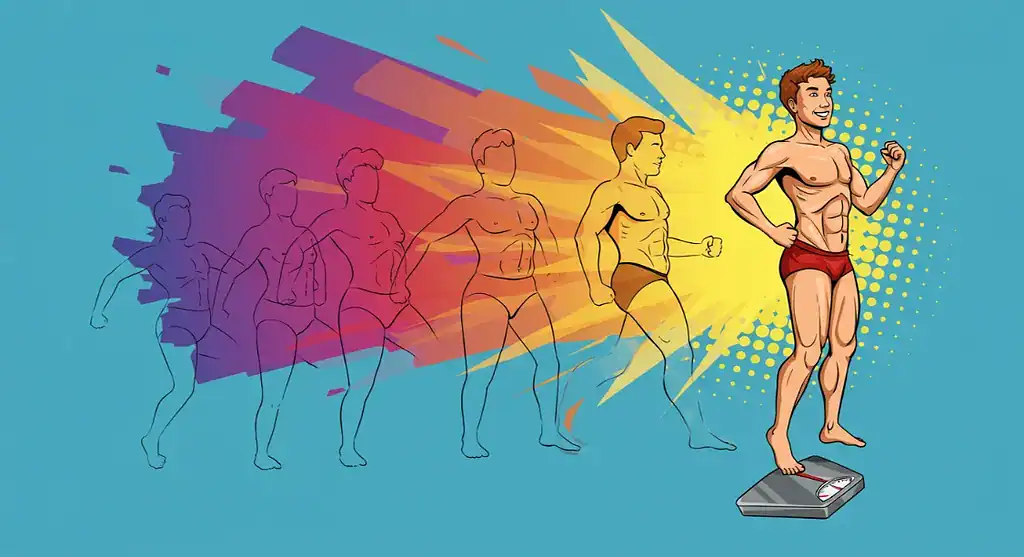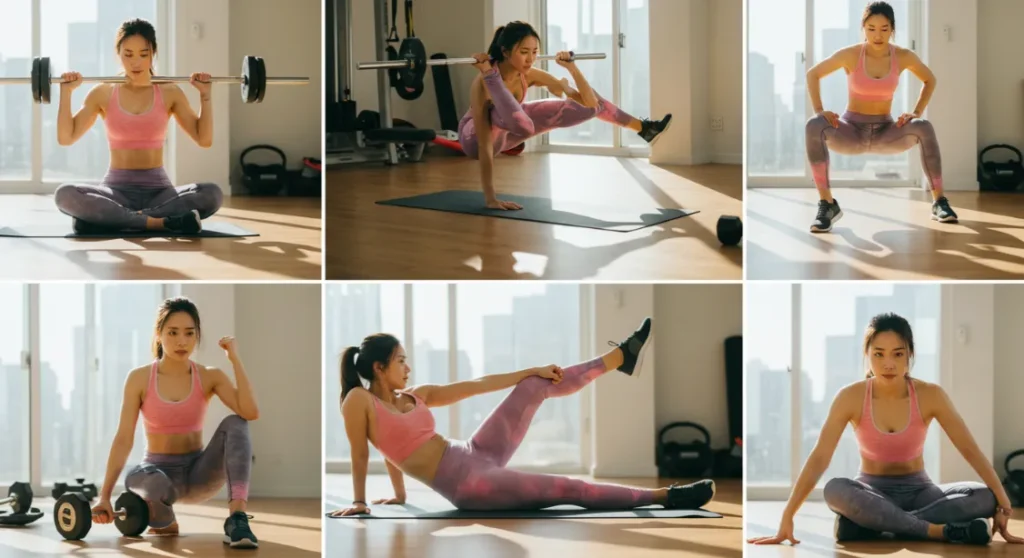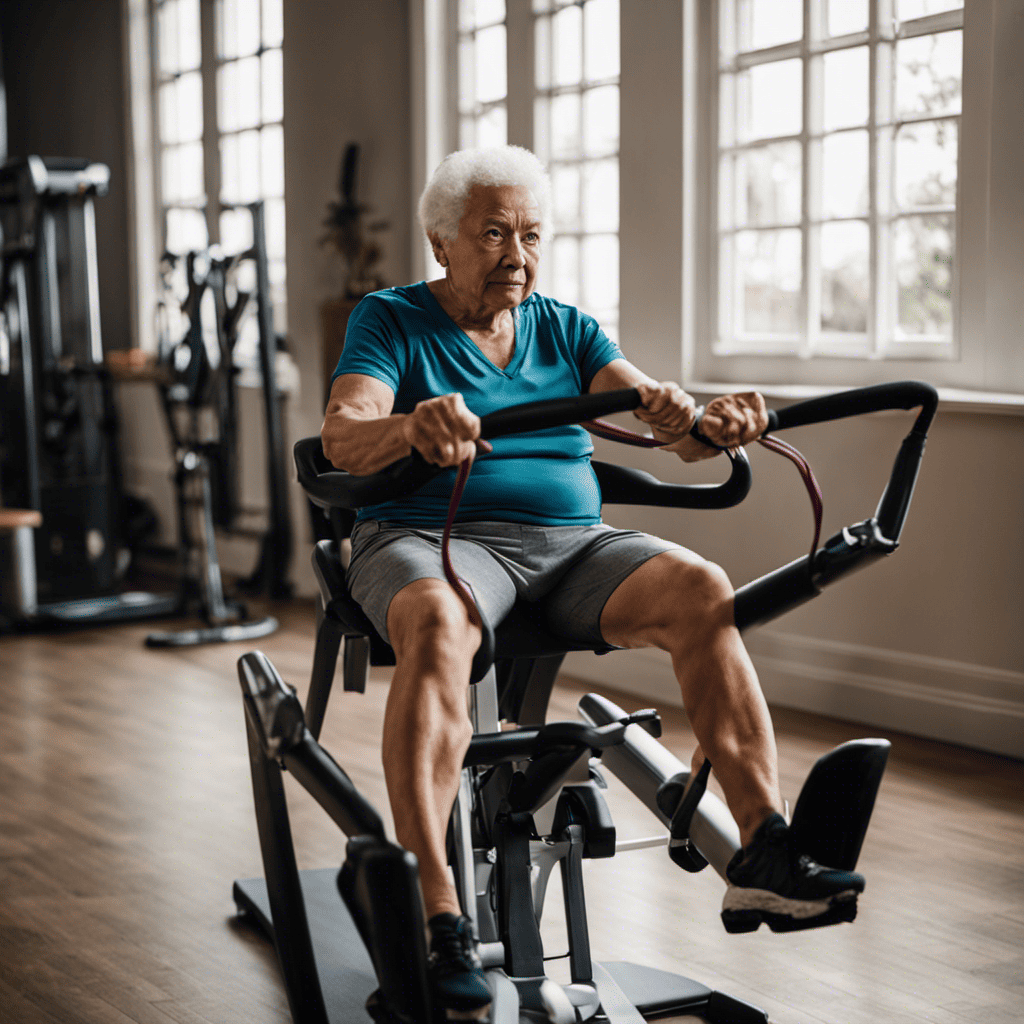Are you ready to reclaim your independence and stay active, even with limited mobility? Look no further than chair exercises designed specifically for older adults.
These exercises are not just about physical movement – they are a pathway to freedom, confidence, and a sense of belonging.
With the guidance of this article, you’ll discover a variety of chair exercises that can improve strength, flexibility, and overall well-being.
Say goodbye to limitations and hello to a more vibrant, fulfilling life.
Key Takeaways

- Chair exercises are beneficial for older adults with limited mobility as they can help improve muscle strength and enhance flexibility.
- These exercises can also reduce the risk of falls and help older adults maintain their independence.
- Chair exercises are safe and accessible for all fitness levels, making them a great option for individuals with limited mobility.
- Proper form is important in chair exercises to maintain proper spinal alignment, keep the torso centered and balanced, focus on controlled movements, and avoid overextending or locking joints.
Benefits of Chair Exercises for Older Adults
You should try chair exercises for older adults because they provide numerous benefits for your overall health and well-being. As we age, staying active becomes increasingly important. Regular physical activity helps to maintain muscle strength, improve flexibility, and enhance balance, all of which contribute to reducing the risk of falls and maintaining independence. Chair exercises are especially beneficial for seniors with limited mobility, as they can be performed while sitting down, making them safe and accessible for all fitness levels.
One of the key benefits of chair exercises is the improvement in cardiovascular health. Engaging in aerobic exercises, such as seated marching or arm raises, can help to increase heart rate and improve circulation. This, in turn, can reduce the risk of heart disease and stroke, and improve overall cardiovascular fitness.
Additionally, chair exercises can help to strengthen muscles and joints. By incorporating resistance exercises, such as seated leg lifts or bicep curls with light weights, seniors can maintain and build muscle mass, which is important for maintaining strength and preventing muscle loss.
Furthermore, chair exercises can also provide mental health benefits. Regular physical activity has been shown to improve mood and reduce the risk of depression and anxiety. The social aspect of participating in group chair exercise classes can also help to foster a sense of belonging and community, which is important for overall well-being.
Getting Started: Chair Exercise Safety Tips

To ensure your safety while performing chair exercises, it’s important to pay attention to proper form. This helps prevent injuries and ensures that you’re getting the full benefits of the exercises.
Proper Form Importance
Make sure you’re paying attention to your form while doing chair exercises to avoid any potential injuries. Proper technique is crucial to getting the most out of your workout and preventing harm.
Here are some common mistakes to avoid:
- Slouching: Sit up tall with your back straight to maintain proper spinal alignment.
- Leaning too far forward or backward: Keep your torso centered and balanced.
- Using momentum instead of muscle control: Focus on controlled movements to engage the targeted muscles.
- Neglecting to breathe: Remember to inhale and exhale throughout each exercise.
- Overextending or locking joints: Keep a slight bend in your knees and elbows to avoid strain.
By maintaining proper form, you can maximize the benefits of chair exercises and reduce the risk of injury.
Now, let’s explore the various advantages that chair exercises offer.
Benefits of Chair Exercises
To maximize the benefits of chair exercises and reduce the risk of injury, focus on maintaining proper form and engaging your muscles through controlled movements. Chair exercises can be a great way for older adults with limited mobility to improve flexibility and increase circulation. Regular practice of these exercises can help to keep your joints supple and prevent stiffness. They can also help to improve blood flow, which is important for maintaining overall health and well-being.
When performing chair exercises, it’s important to listen to your body and not push yourself too hard. Start with gentle movements and gradually increase the intensity as you feel comfortable. Remember to breathe deeply and relax your muscles during the exercises.
Seated Arm Stretches and Range of Motion Exercises
Stretch your arms and improve your range of motion with these seated exercises. Incorporating these exercises into your daily routine can help increase flexibility and promote overall well-being. Here are five seated exercises to try:
-
Shoulder Rolls: Sit up straight with your feet flat on the ground. Roll your shoulders forward and backward in a circular motion. This exercise helps to relieve tension and improve shoulder mobility.
-
Arm Raises: Sit with your feet hip-width apart and extend your arms straight out in front of you. Slowly raise your arms overhead, keeping them straight, and then lower them back down. This exercise helps to strengthen the muscles in your arms and shoulders.
-
Wrist Flexion and Extension: Extend your arms in front of you with your palms facing down. Gently bend your wrists up and down, feeling a stretch in your forearms. This exercise helps to improve wrist mobility.
-
Elbow Curls: Sit with your arms at your sides and your palms facing up. Bend your elbows, bringing your hands towards your shoulders, and then straighten them back out. This exercise helps to strengthen the muscles in your upper arms.
-
Finger Stretch: Extend your arms in front of you with your palms facing up. Slowly spread your fingers apart as wide as possible, and then bring them back together. This exercise helps to improve finger dexterity and flexibility.
Incorporating these seated arm stretches and range of motion exercises into your daily routine can help improve your upper body mobility and overall well-being. Once you have mastered these exercises, you may also consider exploring chair yoga, which offers gentle poses for flexibility and balance.
Chair Yoga: Gentle Poses for Flexibility and Balance

Try incorporating chair yoga into your routine for gentle poses that can improve flexibility and balance. Chair yoga is a great option for older adults with limited mobility, as it allows you to perform stretches and exercises while seated. These gentle chair stretches can help increase your flexibility and range of motion, while also promoting relaxation and stress reduction.
Seated balance exercises are an important component of chair yoga. They help improve your stability and prevent falls, which is particularly important for older adults. Some examples of seated balance exercises include leg lifts, knee extensions, and ankle circles. These exercises target your lower body muscles and help improve your overall balance and coordination.
In addition to flexibility and balance, chair yoga also offers other benefits. It can help improve your posture, strengthen your muscles, and increase your energy levels. It’s a low-impact exercise that’s suitable for people of all fitness levels, including those with chronic conditions or injuries.
To incorporate chair yoga into your routine, find a quiet and comfortable space where you can place a sturdy chair. You can follow along with online videos or join a chair yoga class in your community. Remember to listen to your body and modify the poses as needed to ensure your safety and comfort.
Strengthening Exercises for the Lower Body While Seated
You can perform 10 seated leg presses to strengthen your lower body while remaining seated. Seated leg workouts are a great way to improve muscle strength and endurance, especially for individuals with limited mobility.
Here are some other seated exercises that can help you work on your lower body:
-
Seated leg extensions: Extend one leg at a time, straightening it out in front of you. Hold for a few seconds and then return to the starting position. Repeat with the other leg.
-
Seated calf raises: Place your feet flat on the ground and lift your heels off the floor, raising onto your toes. Hold for a moment and then lower your heels back down.
-
Seated hip abductions: Place a resistance band around your legs, just above your knees. Open your legs out to the sides, against the resistance of the band, and then bring them back together.
-
Seated heel slides: Slide your heels forward along the floor, bending your knees as much as is comfortable. Then, slide your heels back, straightening your legs.
Incorporating these seated balance exercises into your routine can help improve your lower body strength, balance, and overall mobility.
Remember to start with a weight and resistance level that’s appropriate for your fitness level and gradually increase as you get stronger.
Chair Cardio: Get Your Heart Pumping Without Standing Up

Get ready to feel the burn with 10 minutes of chair cardio that will get your heart pumping without having to stand up. Chair exercises are a great way to stay active and improve your fitness level, even if you have limited mobility or suffer from back pain. By incorporating cardio into your seated workout routine, you can boost your metabolism, burn calories, and even aid in weight loss.
To give you an idea of the variety of chair cardio exercises available, here is a table showcasing five different exercises:
| Exercise | Description |
|---|---|
| Seated Jumping Jacks | Extend your arms out to the sides while simultaneously extending your legs out to the sides. |
| Seated Knee Lifts | Lift one knee towards your chest, alternating between legs. |
| Seated High Knees | Rapidly lift one knee towards your chest, then switch to the other leg. |
| Seated Marching | Lift one knee up towards your chest, then lower it while simultaneously lifting the other knee. |
| Seated Toe Taps | Extend one leg out in front of you and tap your toes on the ground, then switch legs. |
These chair cardio exercises are not only effective for weight loss, but they also provide a low impact option for individuals with back pain. The seated position reduces stress on the spine, making it a safer alternative for those with mobility issues. Incorporating regular chair cardio workouts into your routine can help improve overall cardiovascular health, increase endurance, and boost energy levels.
Now that you’ve got your heart pumping, let’s move on to improving your posture and core strength from a chair.
Improving Posture and Core Strength From a Chair
To improve your posture and core strength from a chair, you can try a variety of effective chair exercises. These exercises can help strengthen the muscles in your abdomen, back, and pelvis, improving your overall stability and alignment.
Effective Chair Exercises
Try incorporating 10 effective chair exercises into your daily routine to improve posture and strengthen your core. These exercises are perfect for beginners and can easily be modified to suit your needs.
Here are some chair exercises you can try:
- Seated March: Lift one knee at a time, engaging your core and legs.
- Seated Leg Lifts: Extend one leg out in front of you, then lower it back down.
- Seated Twist: Sit tall and rotate your upper body from side to side.
- Seated Shoulder Press: Hold a water bottle in each hand and press them up towards the ceiling.
- Seated Bicep Curls: Hold a weight in each hand and curl your arms towards your shoulders.
Incorporating these exercises into your routine can improve your posture and strengthen your core, leading to better balance and stability. Plus, having a strong core can also help alleviate back pain and improve overall mobility.
Benefits of Core Strength
Strengthening your core through chair exercises can lead to improved posture and stability. These exercises are particularly beneficial for older adults with limited mobility, as they can help improve balance and prevent falls. By engaging your core muscles, you can enhance your overall body strength and stability, reducing the risk of injuries caused by falls. Chair exercises provide a safe and accessible way to target your core muscles, even if you have difficulty standing or moving around.
To give you an idea of the variety of chair exercises available, here is a sample routine:
| Exercise | Description | Benefits |
|---|---|---|
| Seated twist | Sit upright and twist your torso from side to side | Improves core strength and mobility |
| Leg raises | Lift one leg at a time while seated | Strengthens leg muscles |
| Seated knee lifts | Lift your knees towards your chest and lower them back down | Targets lower abdominal muscles |
| Arm circles | Extend your arms to the side and make circular motions | Enhances shoulder and arm strength |
Incorporating these chair exercises into your daily routine can help improve your balance and reduce the risk of falls, providing you with greater confidence and independence in your daily activities.
Chair Pilates: Toning and Sculpting Your Muscles
Although you may not be able to do traditional Pilates exercises, chair Pilates can still effectively tone and sculpt your muscles. Chair Pilates is a modified version of the original Pilates exercises that can be done while sitting on a chair. It’s a great option for older adults or those with limited mobility who still want to engage in toning exercises and muscle sculpting.
Here are some key benefits of chair Pilates:
- Improved core strength: Chair Pilates focuses on engaging the core muscles, which can help improve your posture and stability.
- Increased flexibility: The gentle stretching movements in chair Pilates can help improve flexibility, making everyday activities easier.
- Enhanced muscle tone: Chair Pilates targets various muscle groups, including the arms, legs, and core, helping to tone and sculpt your muscles.
- Improved balance and coordination: The controlled movements in chair Pilates can help improve your balance and coordination, reducing the risk of falls.
- Low-impact workout: Chair Pilates is a low-impact exercise option, making it suitable for individuals with joint issues or injuries.
Incorporating chair Pilates into your fitness routine can help you maintain your overall strength and mobility. Now, let’s move on to the next section about chair resistance band exercises for upper body strength.
Chair Resistance Band Exercises for Upper Body Strength
You can easily incorporate chair resistance band exercises into your workout routine to build upper body strength. These exercises are a great way to target and strengthen your arms, shoulders, and back, all while sitting comfortably in a chair. Chair resistance band workouts are especially beneficial for older adults with limited mobility, as they provide a low-impact and safe way to improve upper body strength.
To help you get started, here are three simple upper body stretching exercises that you can do using a resistance band and a chair:
| Exercise | Targeted Muscles | Instructions |
|---|---|---|
| Seated Rows | Back, Shoulders | Sit upright with your feet flat on the floor. Hold the resistance band with both hands in front of you, palms facing each other. Pull the band towards your chest, squeezing your shoulder blades together. Slowly release and repeat. |
| Bicep Curls | Biceps | Sit upright with your feet flat on the floor. Hold the resistance band with both hands, palms facing up. Keep your elbows close to your sides and curl the band up towards your shoulders. Slowly lower and repeat. |
| Overhead Press | Shoulders | Sit upright with your feet flat on the floor. Hold the resistance band with both hands, palms facing forward. Start with your elbows bent at a 90-degree angle. Push the band up overhead, fully extending your arms. Slowly lower and repeat. |
Incorporating these chair resistance band exercises into your routine will help you improve your upper body strength and flexibility. Remember to start with a band resistance that feels comfortable for you and gradually increase the intensity as you get stronger. By adding these exercises to your workout routine, you can feel confident and empowered as you work towards your fitness goals.
Chair Exercises for Seniors With Arthritis or Joint Pain
If you have arthritis or joint pain, chair exercises can provide gentle and joint-friendly movements to help alleviate discomfort and improve mobility.
These exercises can be done in the comfort of your own home and require only a sturdy chair.
Gentle Joint-Friendly Movements
Try incorporating gentle joint-friendly movements into your daily routine to alleviate arthritis or joint pain. Here are some ideas to get you started:
-
Gentle seated stretches: Stretching your muscles and joints can help increase flexibility and reduce stiffness. Try stretching your arms, legs, and neck while sitting in a chair.
-
Modified chair exercises: Perform exercises that are modified to be done while seated. These exercises can help improve strength and mobility without putting excessive strain on your joints.
-
Range of motion exercises: Move your joints through their full range of motion to maintain flexibility and reduce pain. Rotate your ankles, wrists, and shoulders in circular motions.
-
Low impact activities: Engage in low impact exercises such as swimming, walking, or cycling. These activities can help improve cardiovascular health and strengthen your muscles without putting stress on your joints.
-
Balance exercises: Incorporate exercises that focus on improving balance, such as standing on one leg or using a balance board. These exercises can help prevent falls and improve stability.
Remember to consult with your healthcare provider before starting any new exercise routine, especially if you have underlying health conditions or concerns.
Chair Exercises for Arthritis
Performing three chair exercises daily can help alleviate arthritis symptoms and improve joint mobility. Arthritis is a common condition that affects millions of people, especially older adults. It can cause pain, stiffness, and limited mobility in the joints, making it difficult to perform everyday tasks.
However, incorporating chair exercises into your daily routine can be a simple and effective way to manage arthritis and find relief from pain. Some examples of chair exercises include seated leg raises, arm curls, and shoulder rolls. These exercises can help increase blood flow to the joints, strengthen surrounding muscles, and improve flexibility.
Remember to start slowly and gradually increase the intensity of your exercises. With consistent practice, you can experience improved arthritis management and find relief from pain.
Conclusion
Incorporating chair exercises into a daily routine can greatly benefit older adults with limited mobility. These exercises offer a safe and effective way to improve flexibility, strength, and overall well-being. Whether it’s gentle stretches, yoga poses, or resistance band exercises, there are plenty of options to choose from.
So why wait? Start incorporating these exercises into your daily routine and enjoy the many benefits they bring. Remember, a journey of a thousand miles begins with a single step!
As a veteran fitness technology innovator and the founder of GearUpToFit.com, Alex Papaioannou stands at the intersection of health science and artificial intelligence. With over a decade of specialized experience in digital wellness solutions, he’s transforming how people approach their fitness journey through data-driven methodologies.
